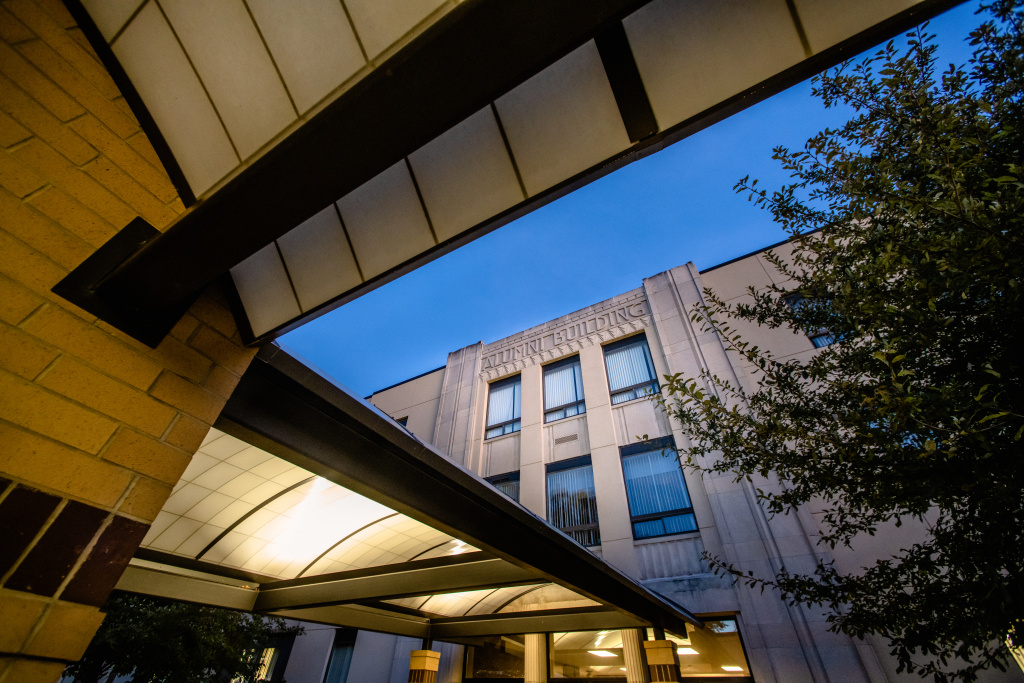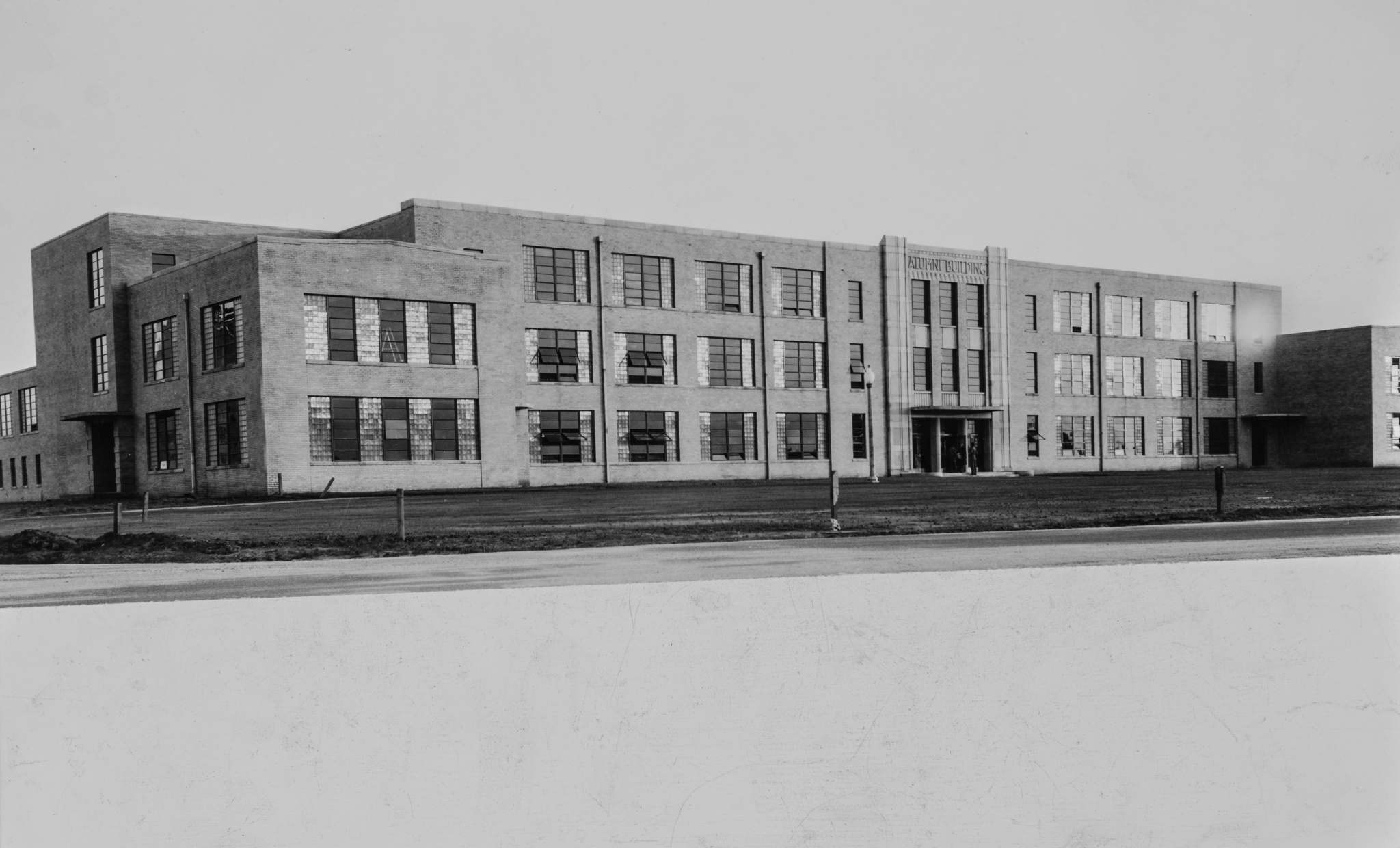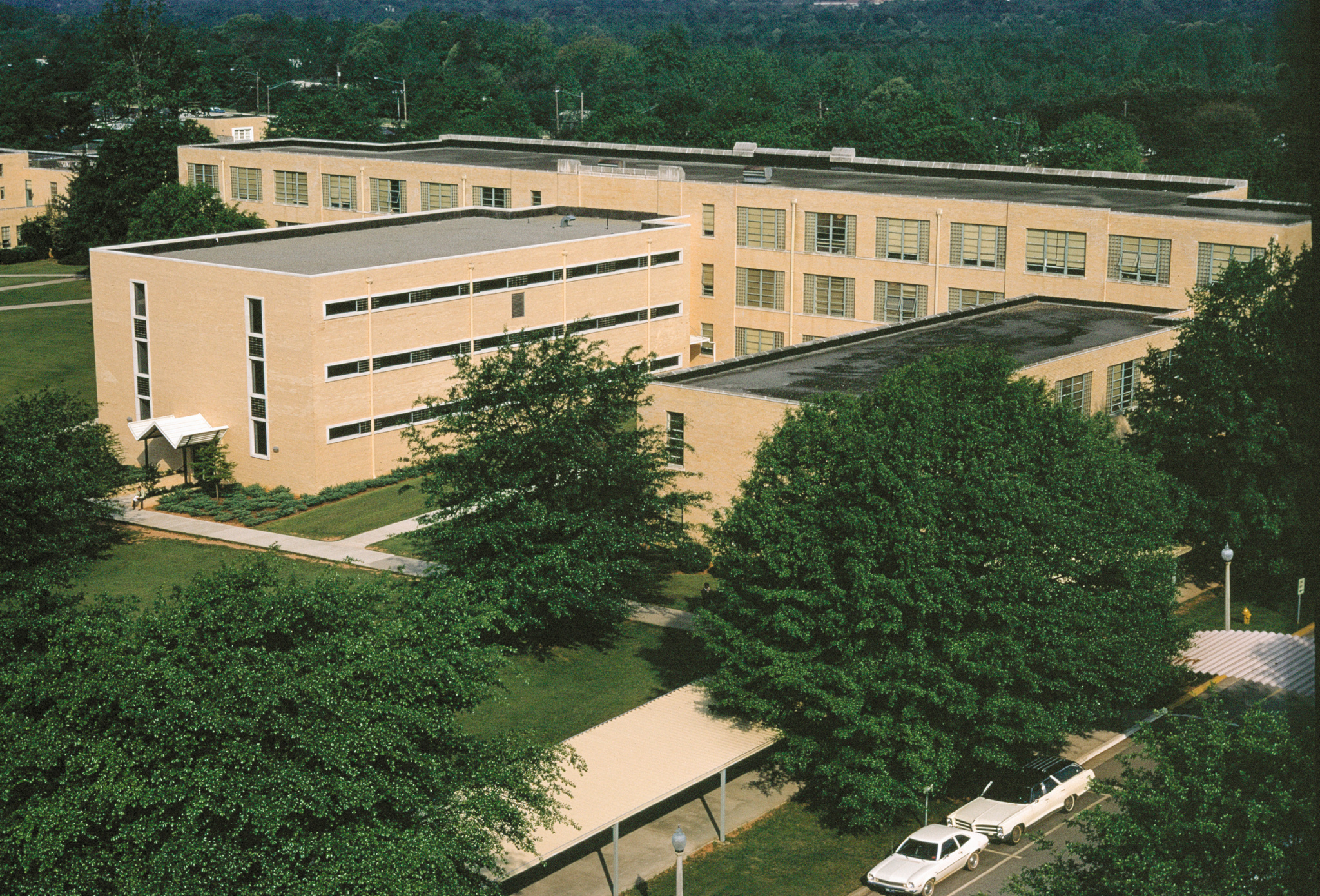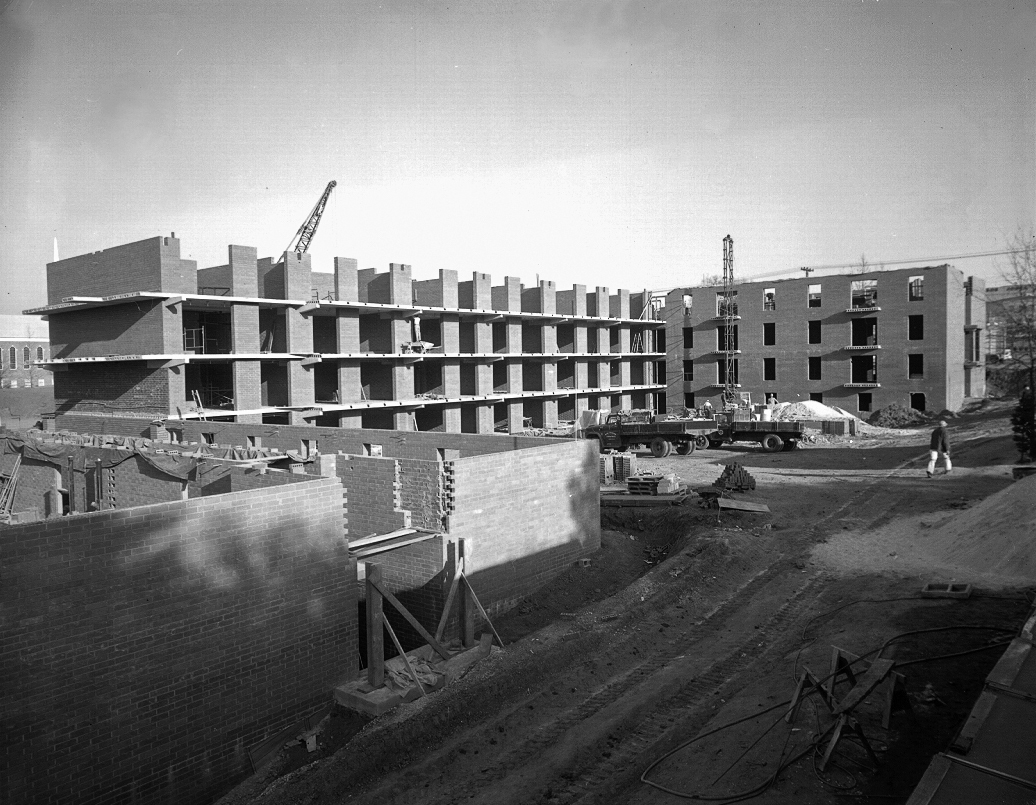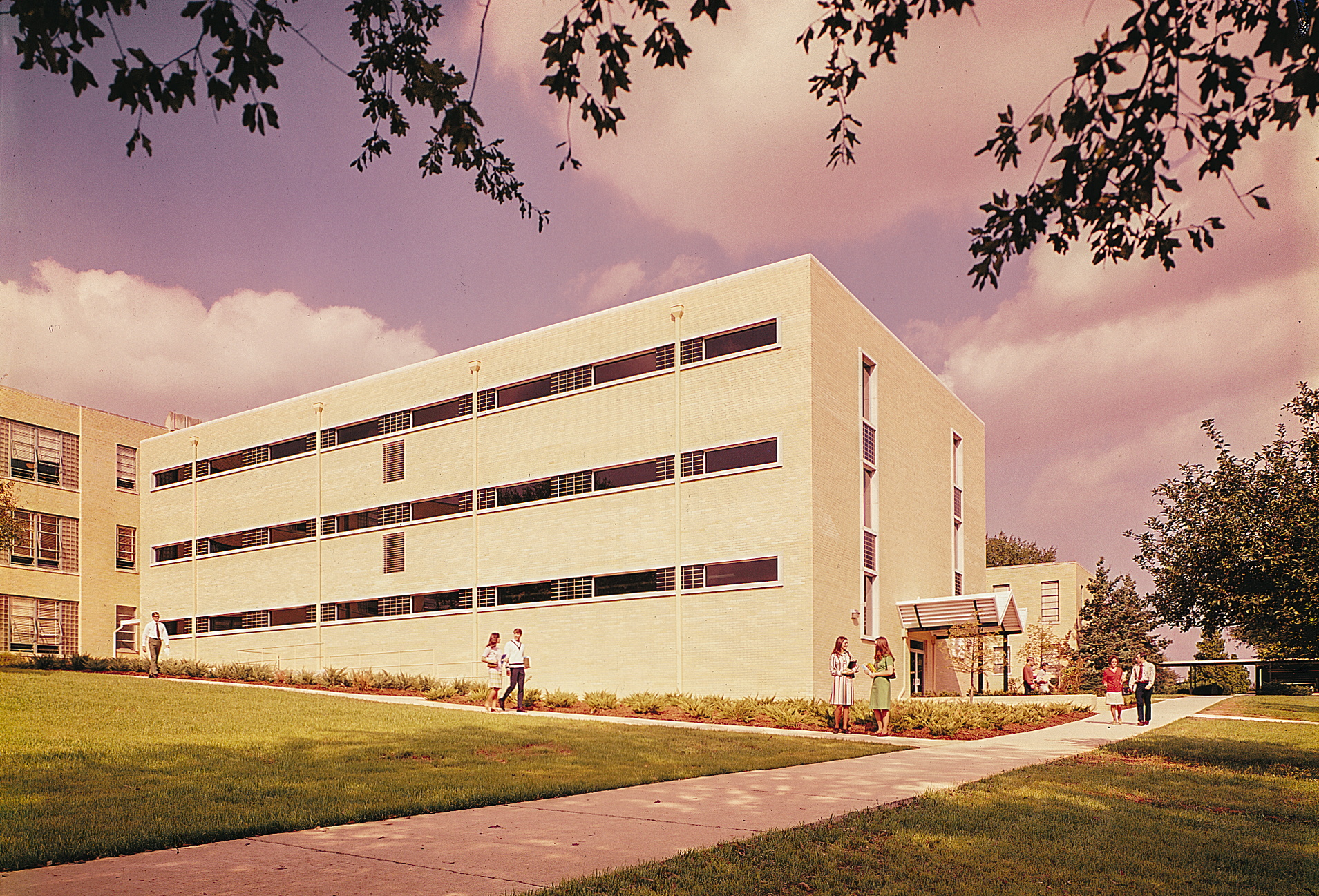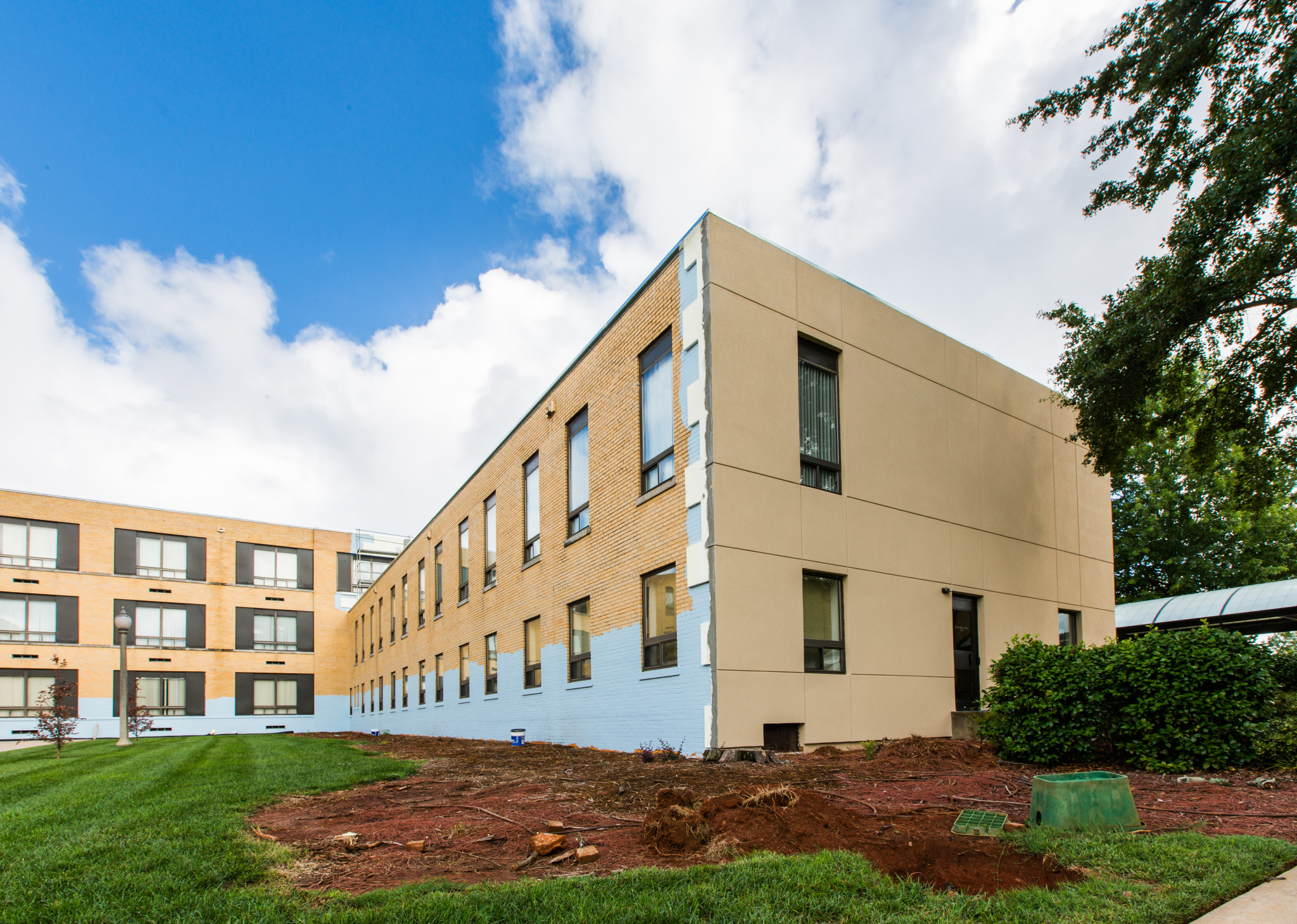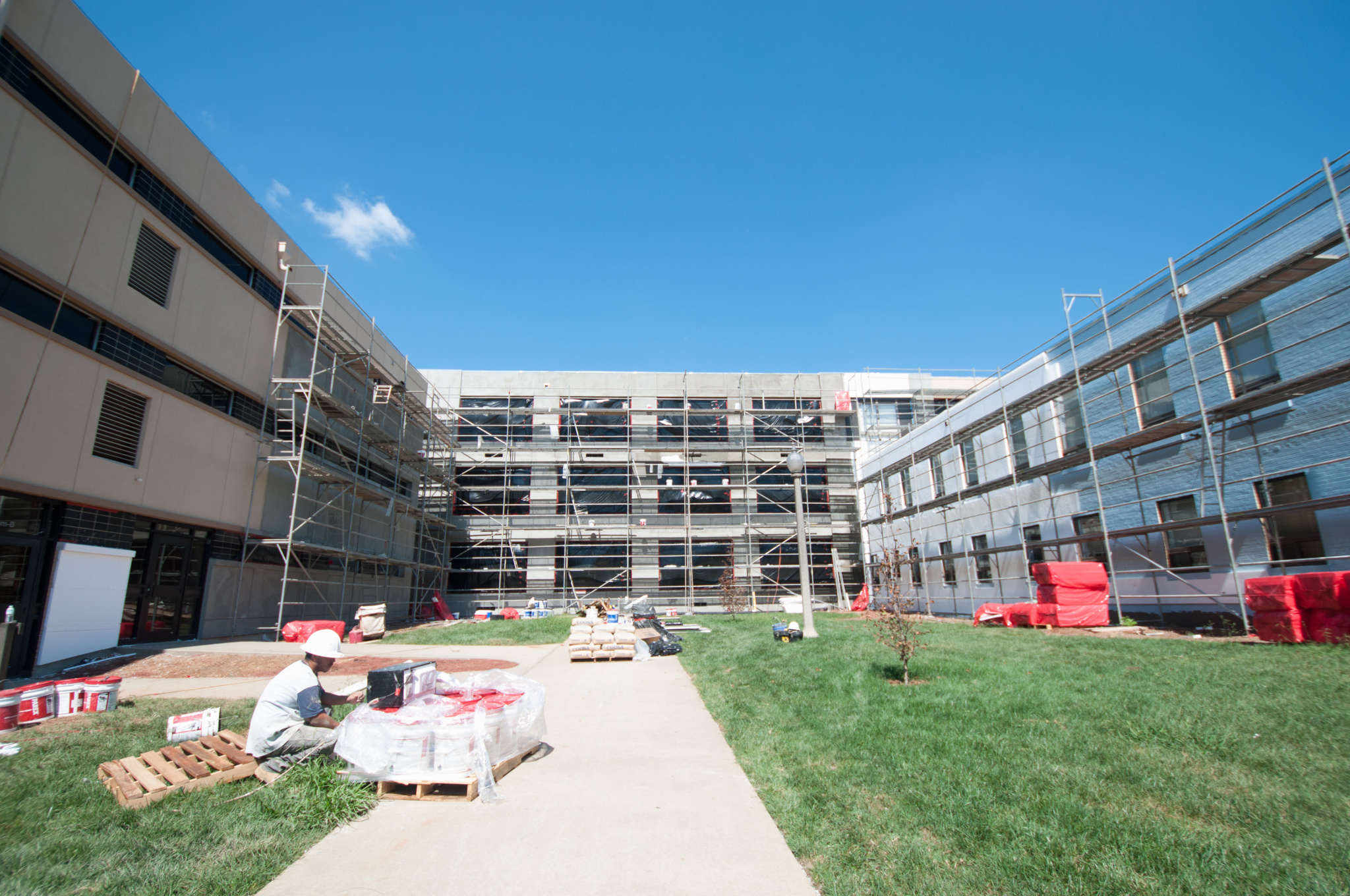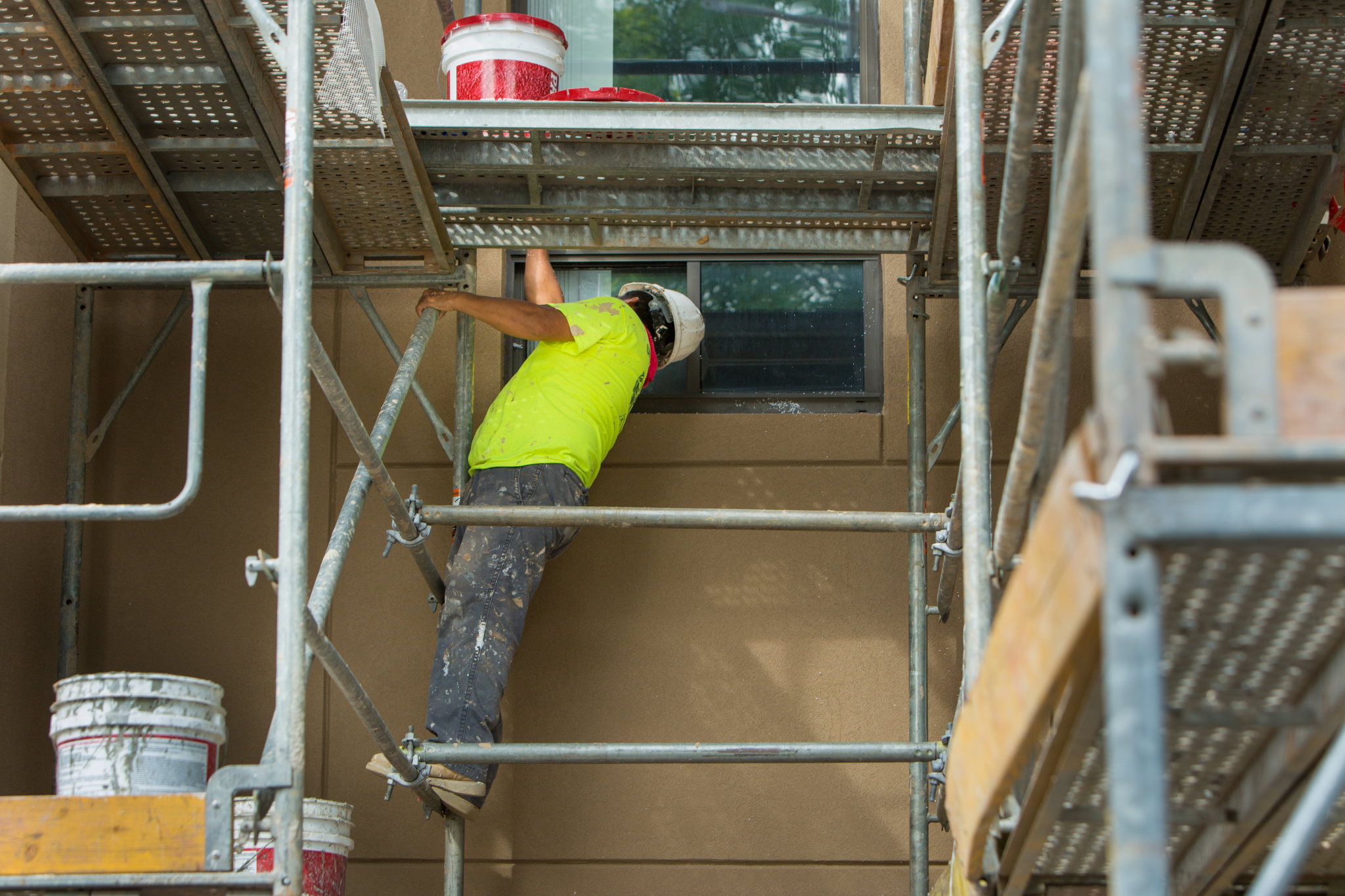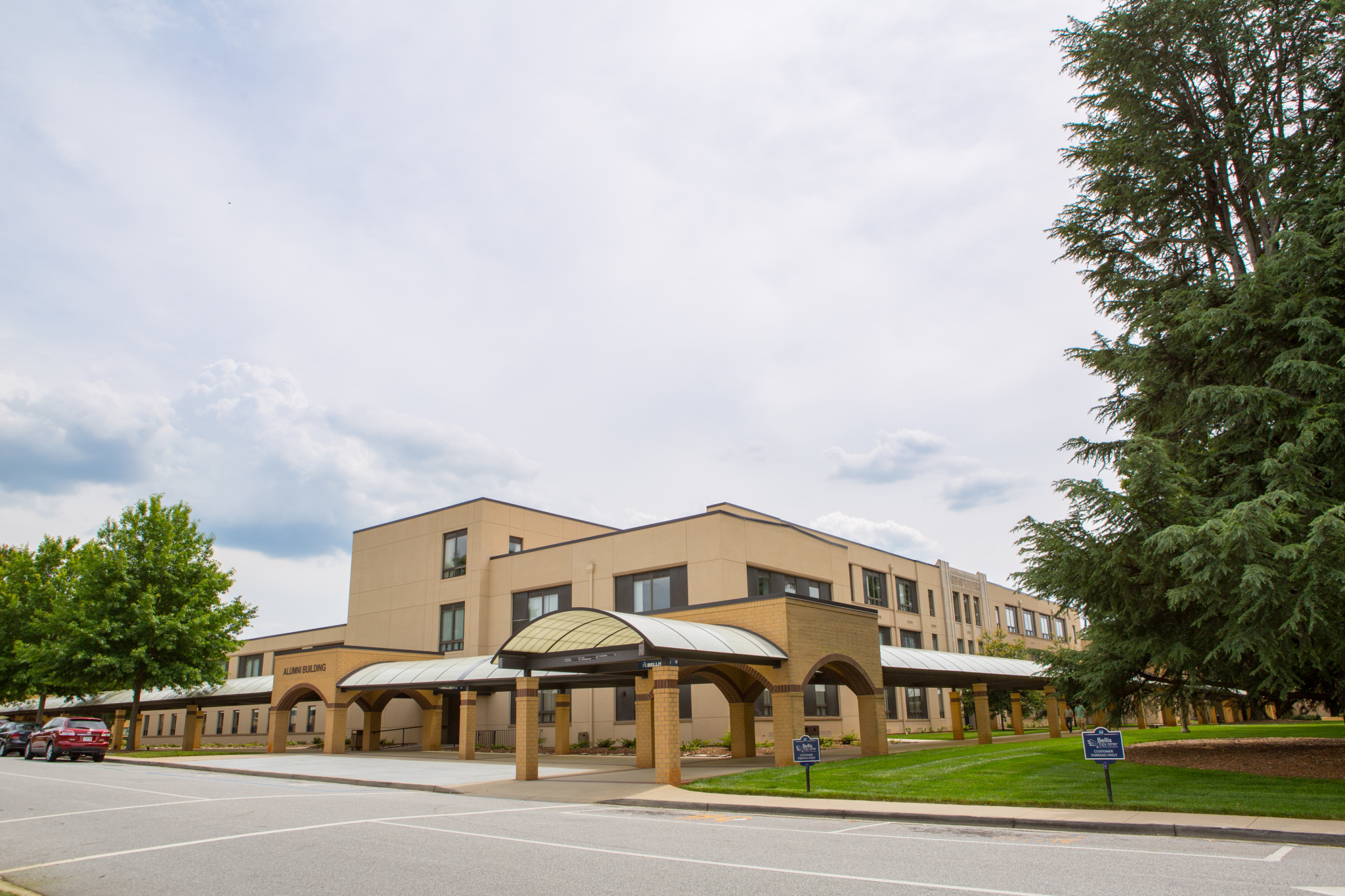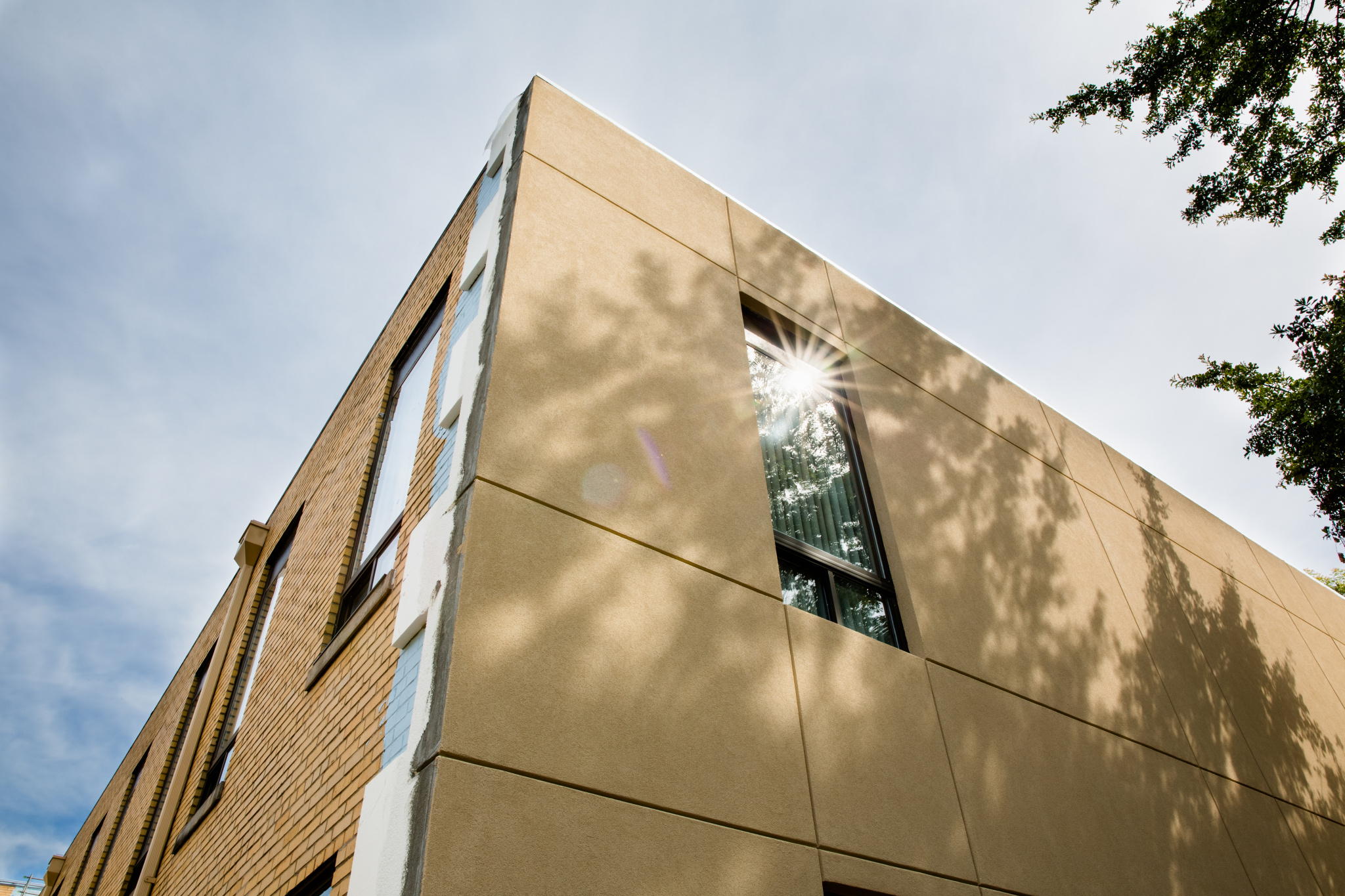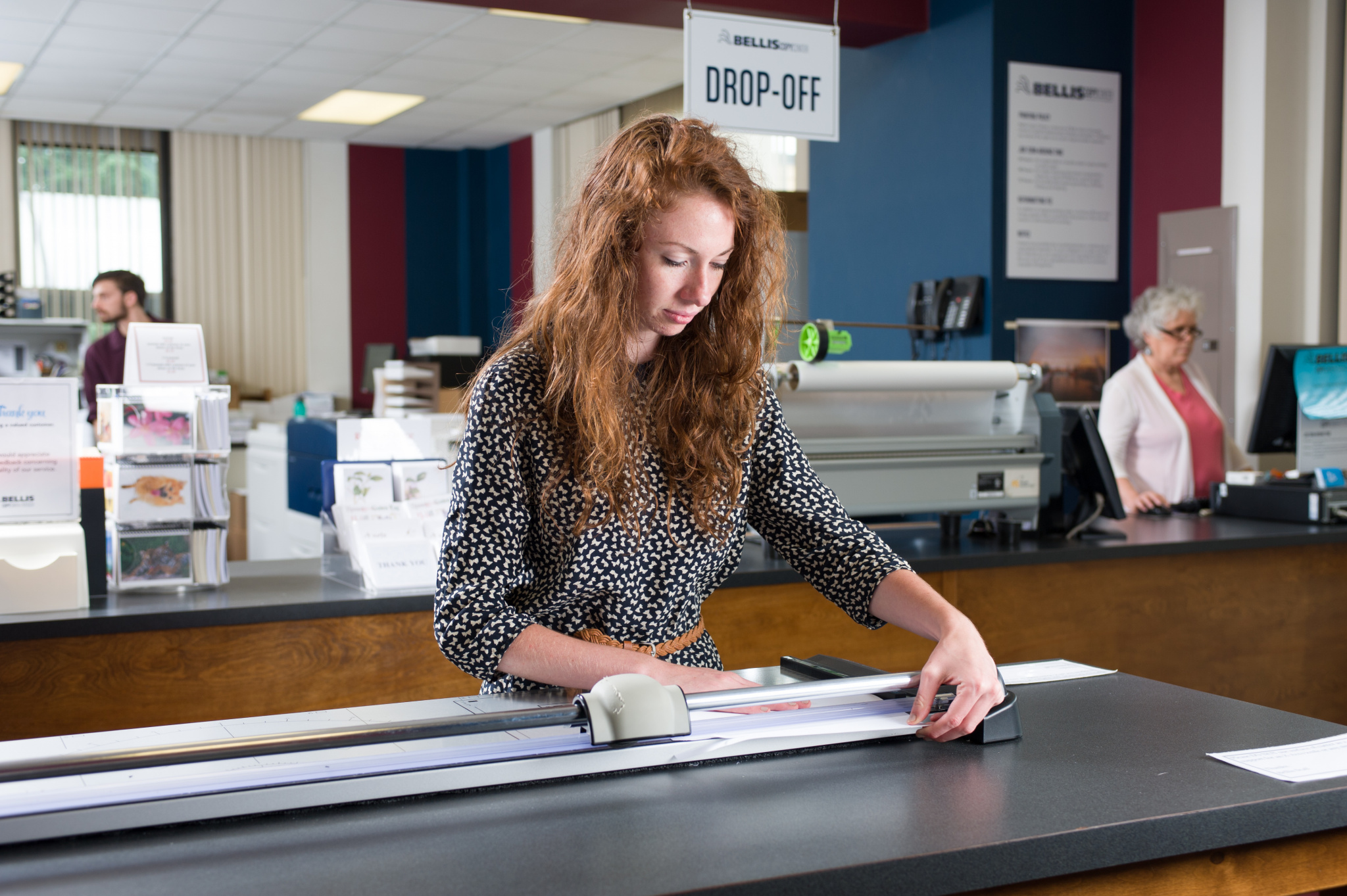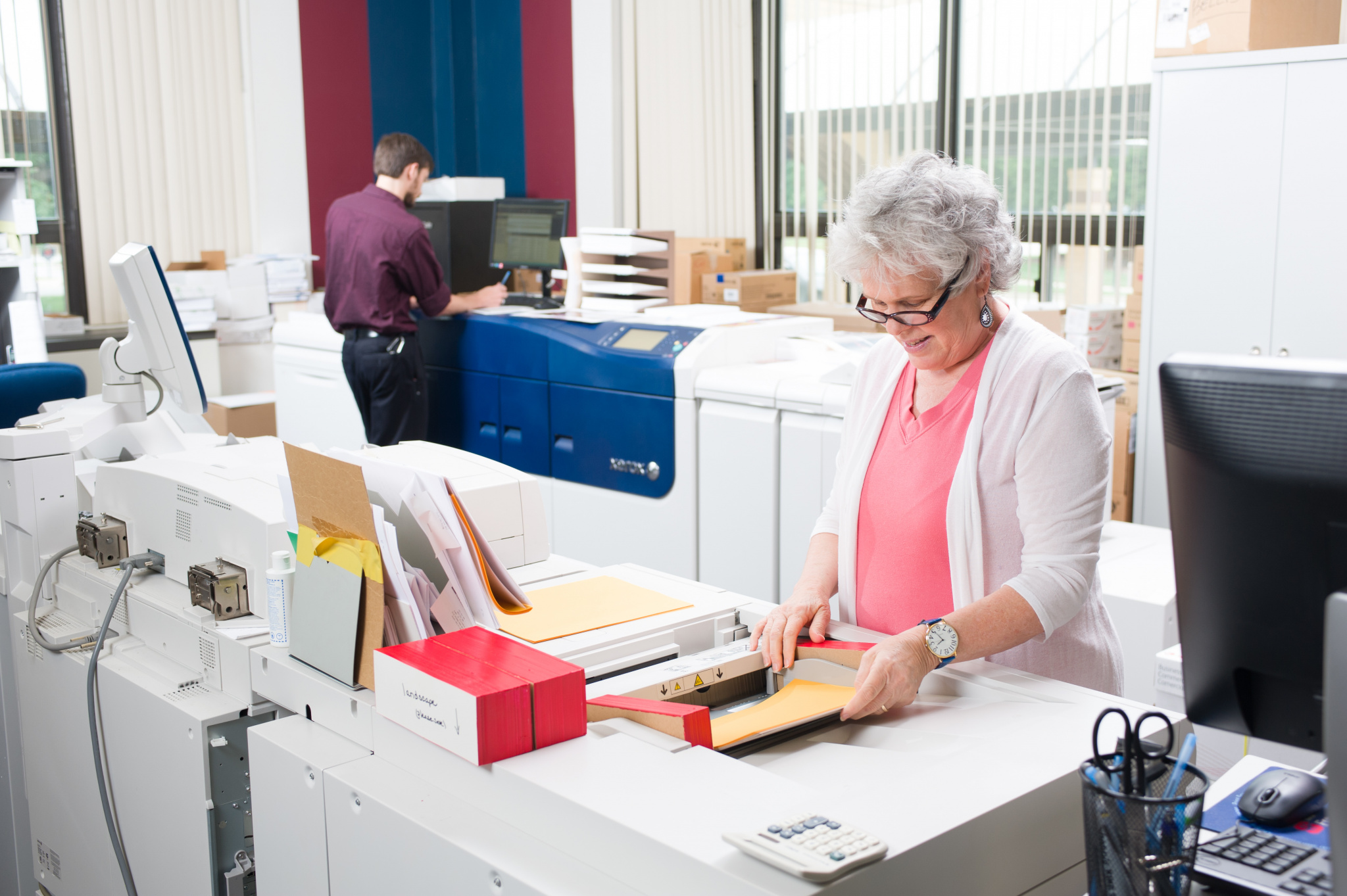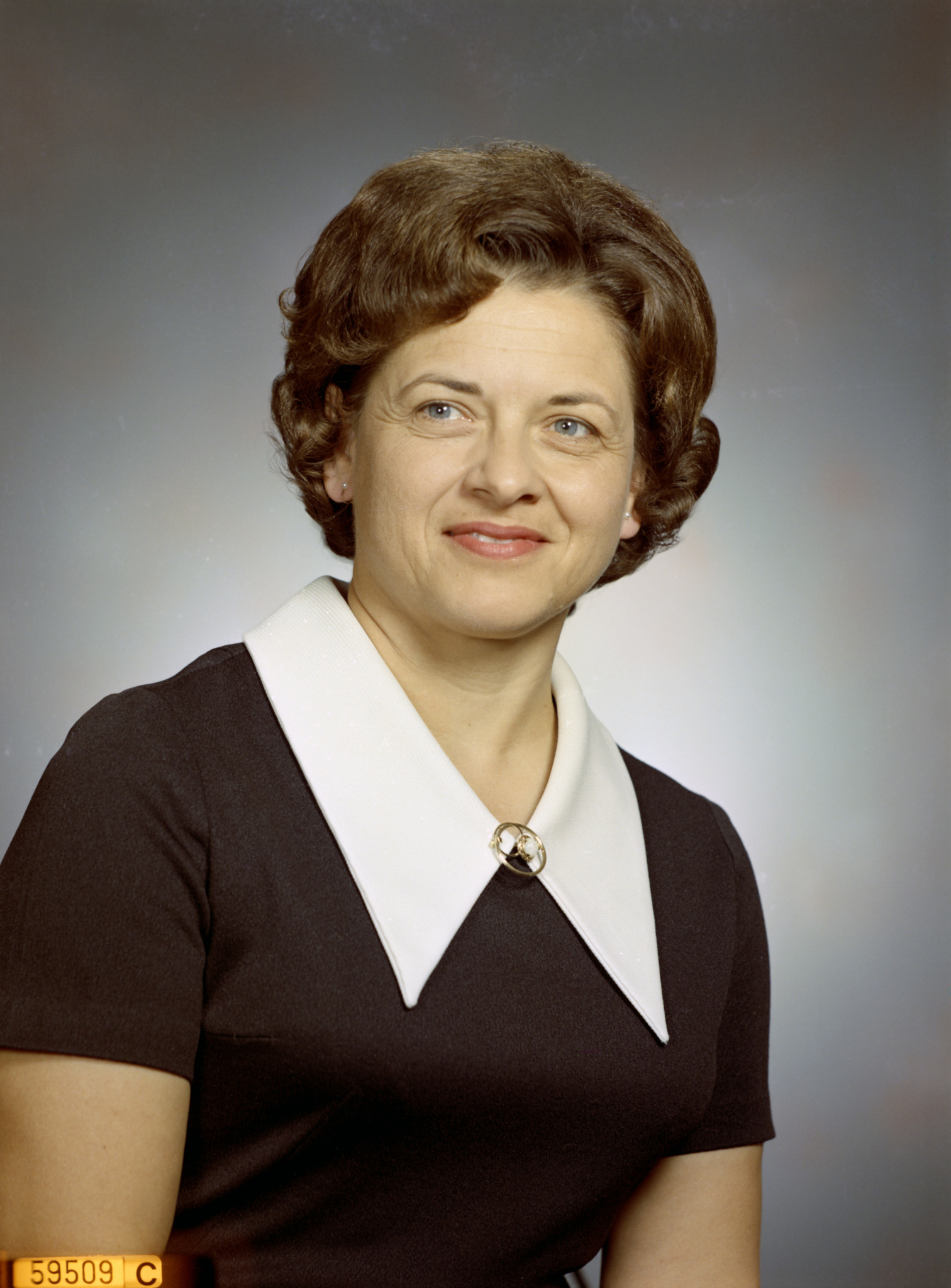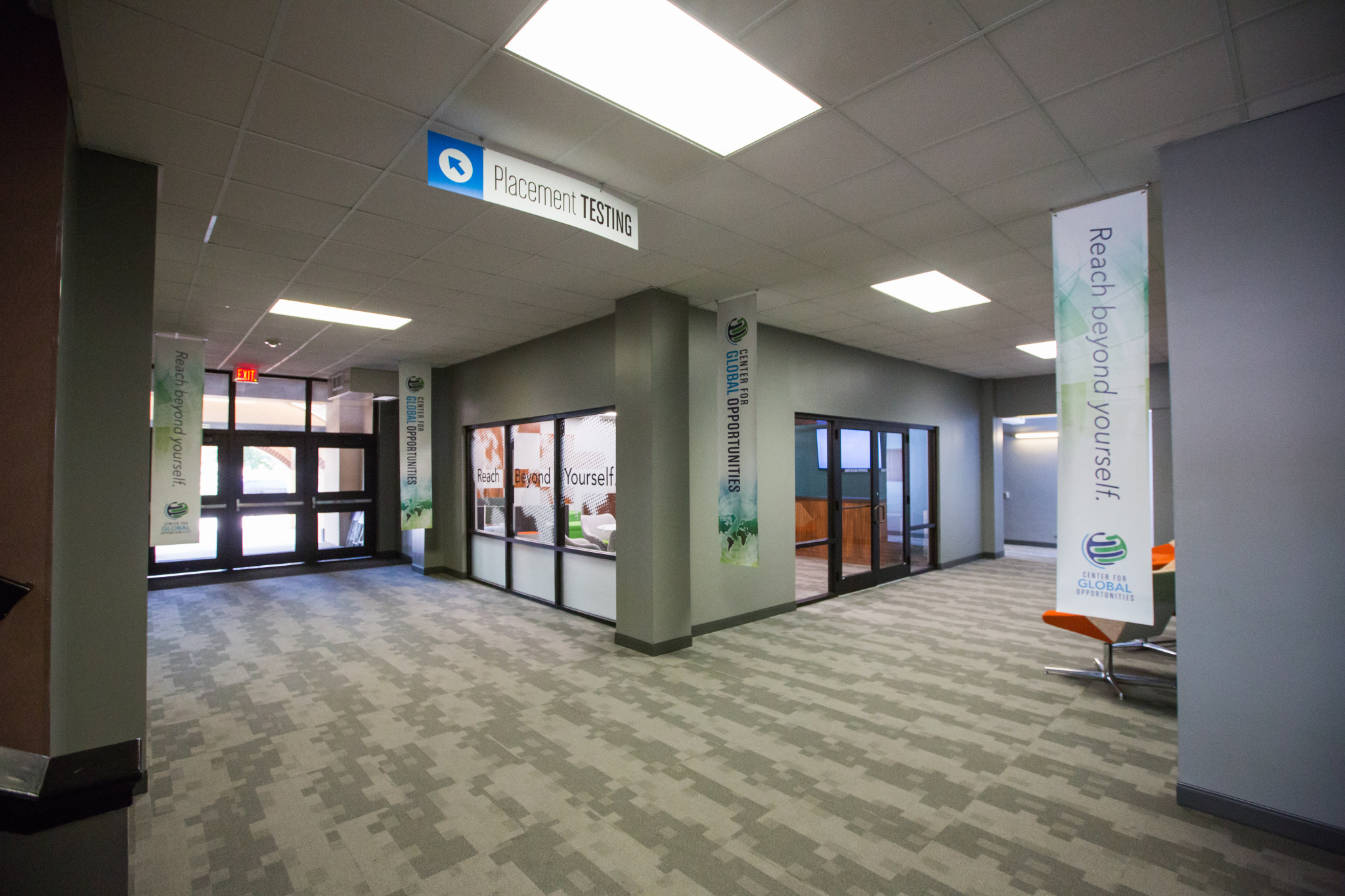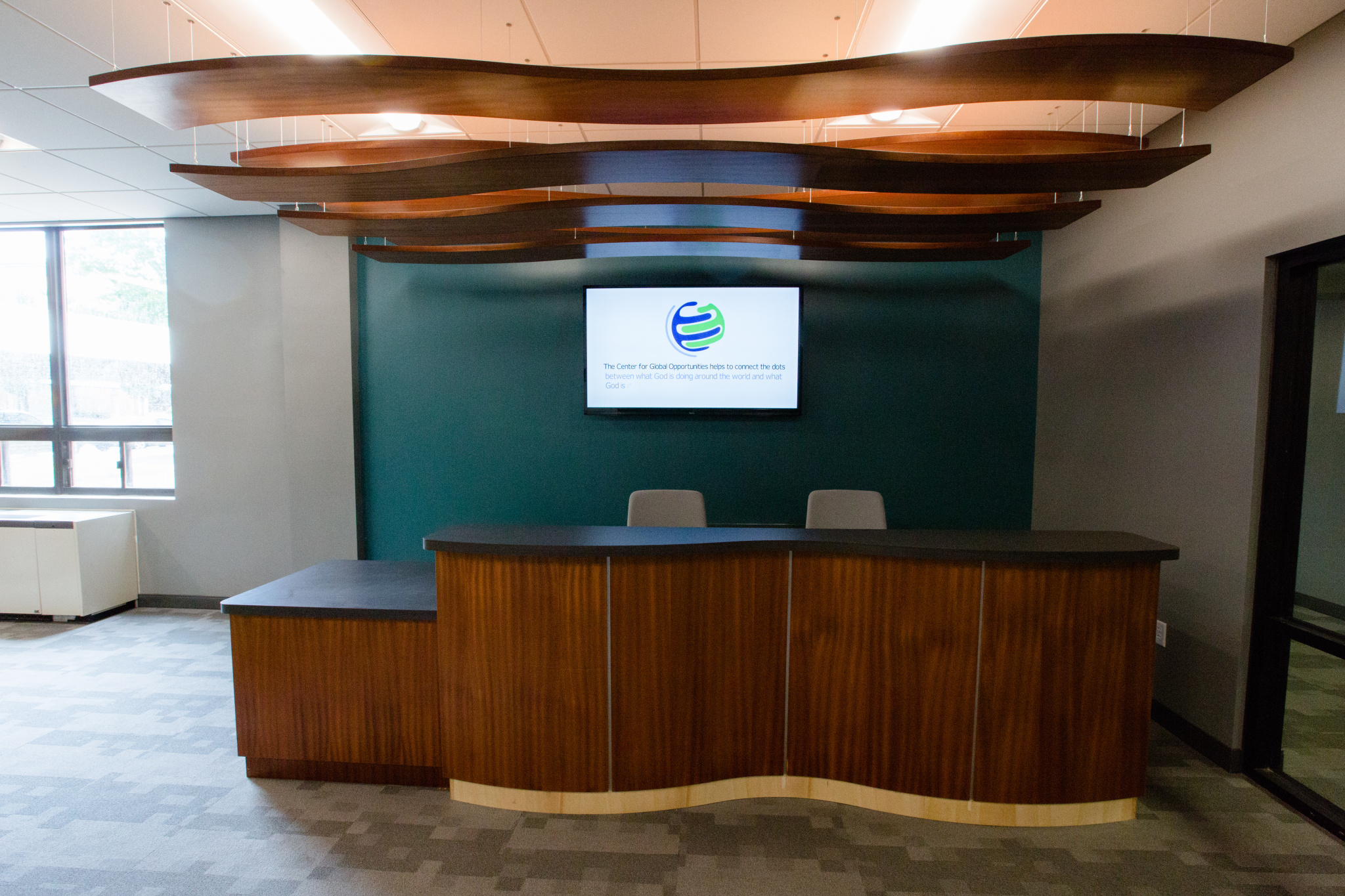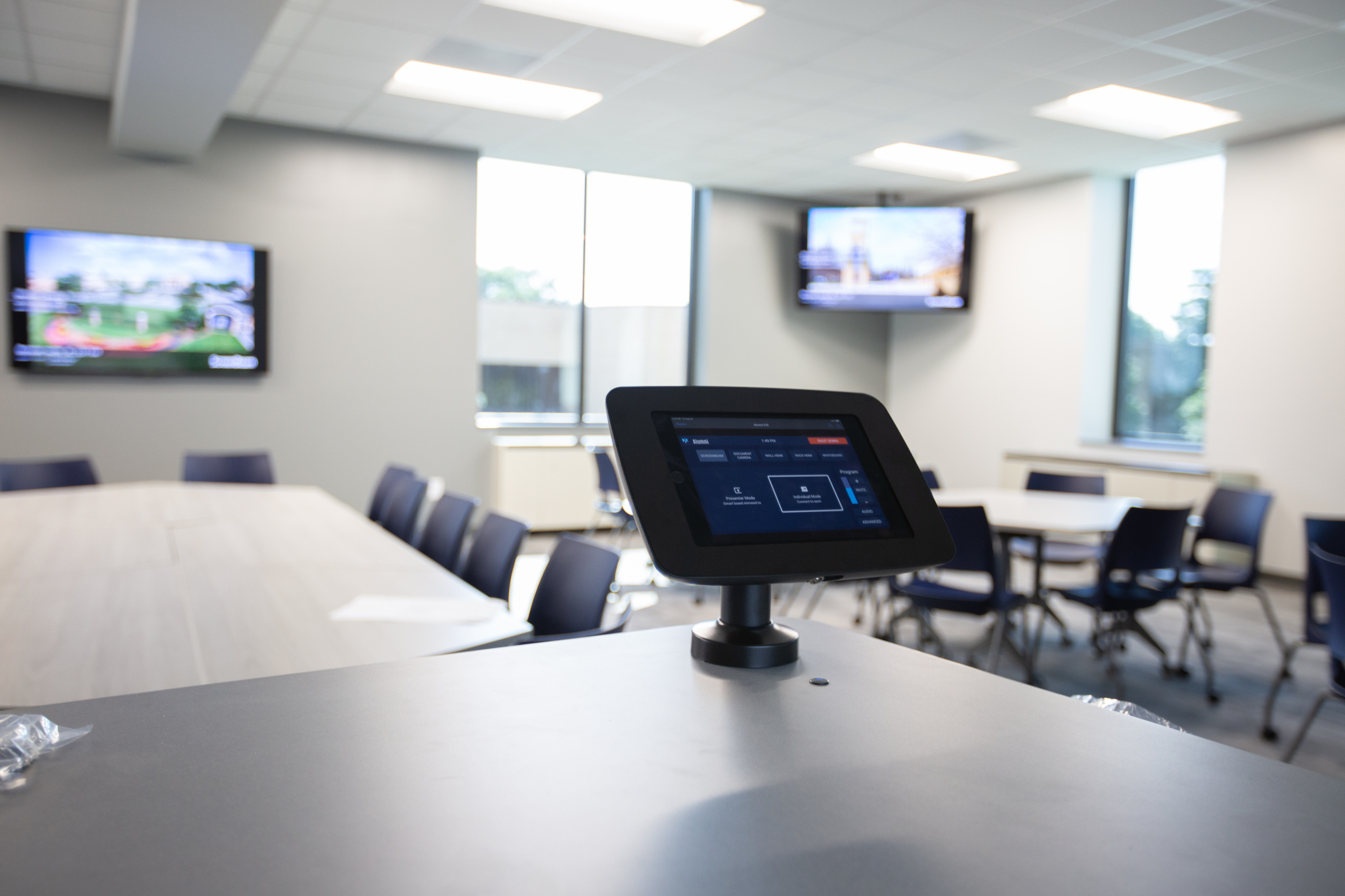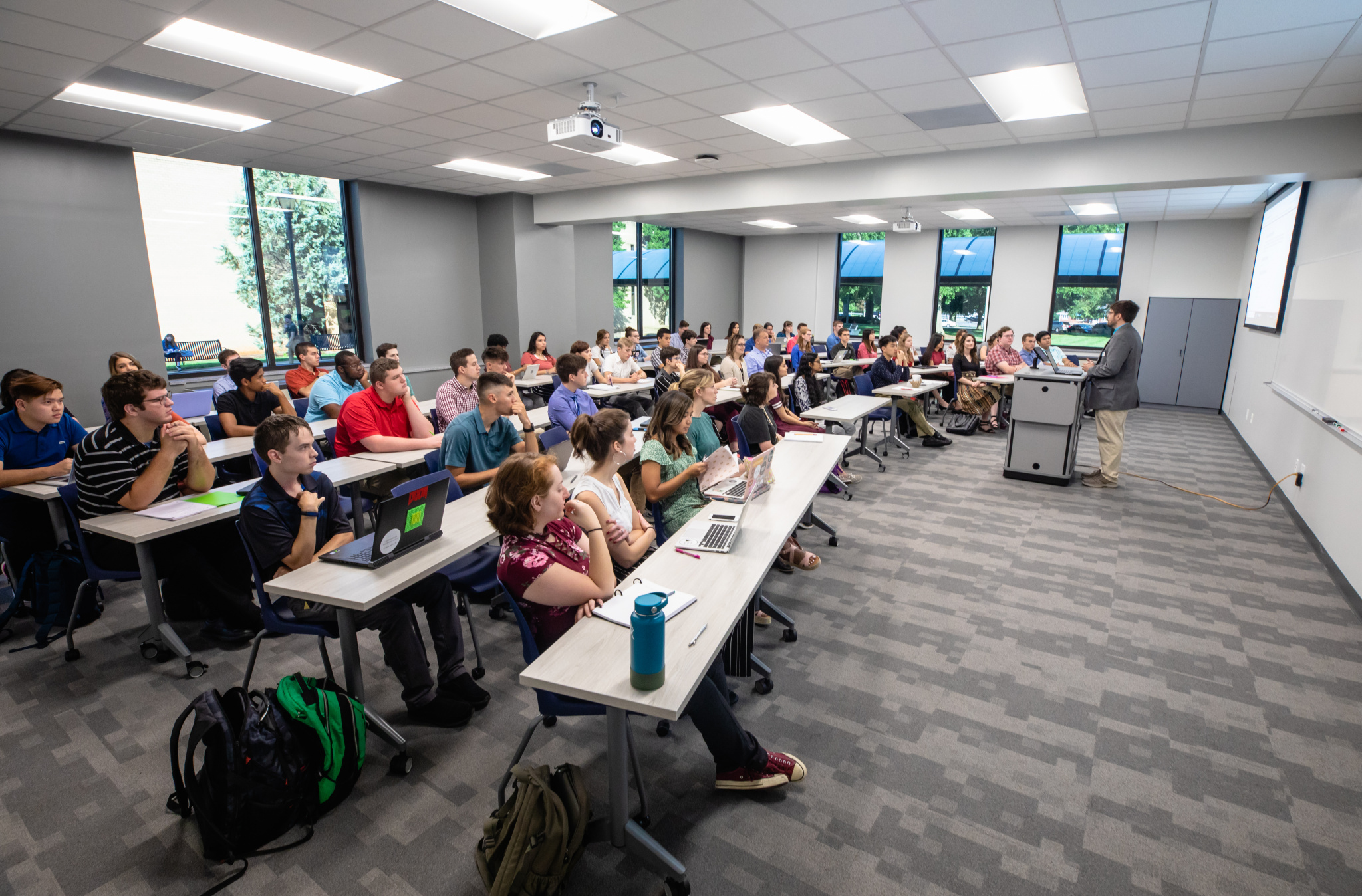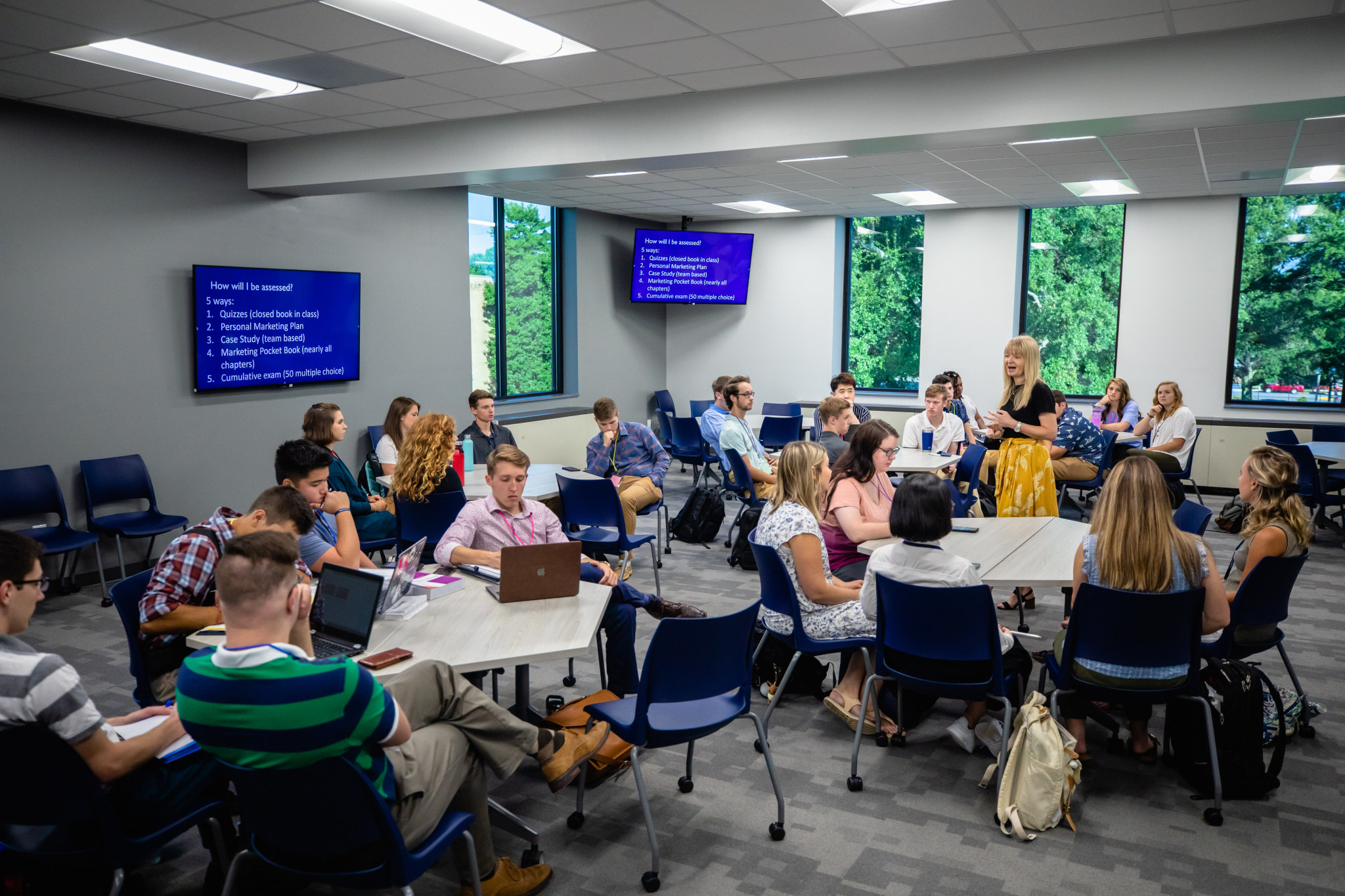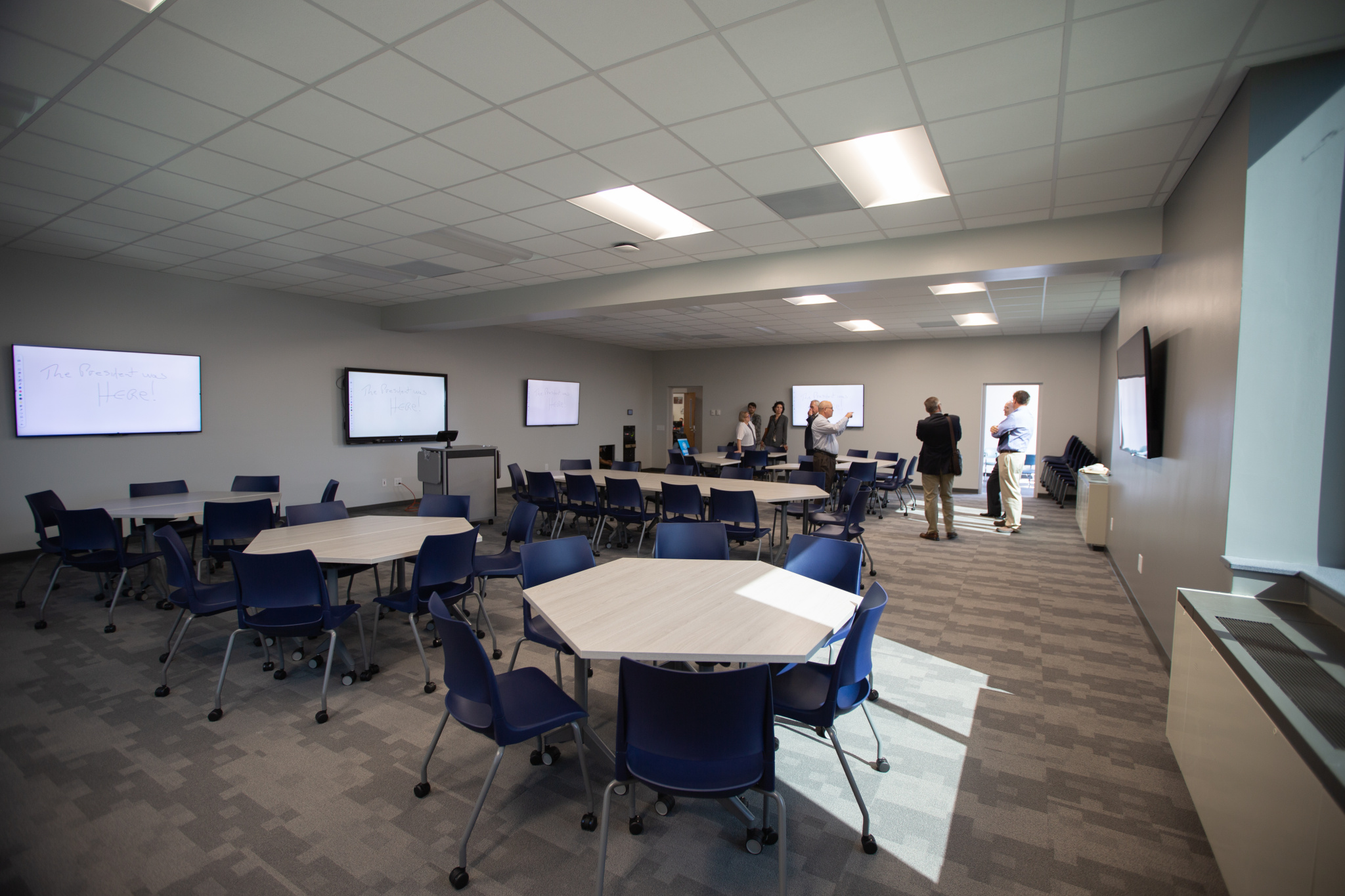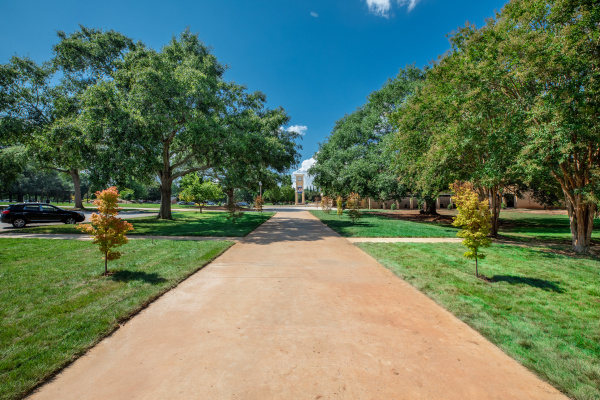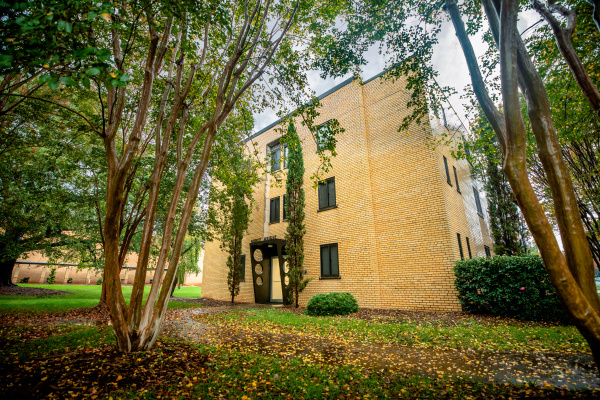In Tennessee the first Alumni Building stood as a dedication to graduates who had funded the school. The building, finished in time for the 1945–46 school year, served BJU for two years before it was time to build a new Alumni Building in Greenville. Erected in 1947 along with 17 other buildings original to the campus, it was prepared to receive every BJU student from that year on.
Architectural Renovations
Office and Classroom Addition
In 1971, the Alumni Building received its first update: a four-story addition to the back of the building. According to Dr. Dan Turner, former faculty and band director, “One English professor quipped that an aerial view of the new wing, unfortunately, gave the building the shape of a giant F.” Nevertheless, the wing created room for over 60 faculty offices, two large lecture rooms, a faculty lounge and other rooms for University organizations and services.
Interior Renovations
In 1990, the building underwent its first renovations. Walls were reconstructed and received new wallpaper, carpet was added to the classrooms, the halls were recarpeted, and the doors were replaced. The elevator, funded by the Alumni Association, was also installed that summer.
Stucco Exterior
During the summer of 2016, the Alumni Building needed exterior renovations to improve its appearance and prevent water damage. Instead of replacing the brick as originally thought, the brick was sealed to save expenses. On top of the sealer and insulating foam, the new stucco gives the building an updated look while blending with the rest of the campus.
Repurposing Rooms in the Alumni Building
Former Occupants
In the first years at Greenville, the Alumni Building was home not only to University students but also to Bob Jones Academy students. Until the first Academy building was dedicated in 1951, the Academy occupied the west end of the building. Likewise, the Alumni Building housed BJU’s seminary until the Bob Jones Jr. Memorial Seminary and Evangelism Center officially opened on March 24, 2000.
Bellis Copy Center
During summer 2000, Alumni 117 became the Bellis Copy Center—an expanded version of the faculty duplicating service previously in Alumni 29. BJU students and the community have access to affordable copying and printing services on campus. The copy center opened with several types of copiers and a PC and a Mac for final corrections before printing. A list of services currently offered can be found on the Bellis Copy Center website.
After graduating and working for a short time at BJU, Arlene Bellis (‘49) returned to BJU in 1954 with her husband Jim (‘50), who taught Bible until 2001. She taught typing until 1962 and, until her retirement in 2000, headed the faculty duplicating service which she organized in 1954—back when mimeograph machines were still in use. In this way, she served behind the scenes. Bellis said, “Most of these years (at BJU) have been spent duplicating materials for teachers to use in their classes. I often thought about these students being trained to serve the Lord, and my work had a small part in their training.”
For over 50 years, the Bellises also traveled to Georgia each weekend where Jim pastored a church.
Dean Hall
In 2008, several deans moved from the Administration Building to the main level of the Alumni Building’s 1971 addition. Dr. David Fisher—vice provost for academic administration—said, “We wanted to get the deans closer to their faculty and to their division chairs and department heads.”
Academic Resource Center
In 2012, academic resources were localized on the second floor of the Alumni Building. The Academic Resource Center offers many of the services it originally had, such as the Testing Center, computer labs, Educational Technology (now Technology Resources) and accommodations for students with disabilities—a service based on the former Learning Resource Center in Alumni 206.
See Also: Student Resources for Success
Center for Global Opportunities
Across the hall from the Bellis Copy Center, another classroom was repurposed in 2016 as the Center for Global Opportunities. This organization seeks to further the Gospel locally and globally through outreach and events.
Updated Classrooms
After the spring semester of 2015, Alumni 110 and 210 closed because of water damage. During summer 2019, they were renovated—updated technology and tinted windows included—and then opened that fall. Alumni 110 remains a lecture room, but the lectern stands on the long side of the room, making the classroom seem less deep while still holding 76 students. Alumni 210 is now a classroom with trapezoidal tables designed for collaborative learning. When other rooms in the Alumni Building are updated, they will be modeled after these two rooms.
Fisher said, “This is a first step. I know the president and his team are (deciding) how we might incrementally improve the Alumni Building over the next several years.”


